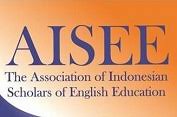EXPLORING THE LINK BETWEEN PHONEMIC AWARENESS AND LISTENING PERFORMANCE AMONG ENGLISH MAJORS IN PALEMBANG
DOI:
https://doi.org/10.36706/jele.v12i1.73Keywords:
Listening-comprehension, phonemic-awareness, relationshipsAbstract
This study examined the relationship between phonemic awareness and listening performance among English major students, employing a quantitative correlational design to collect data from 83 students through a phonemic awareness assessment and a cloze listening test. The results showed that while most students demonstrated moderate levels of phonemic awareness, their listening proficiency remained low, with the majority scoring in the poor or failed categories. The analysis revealed a strong positive correlation (r = 0.772, p < 0.05) between phonemic awareness and listening performance, with phonemic awareness accounting for nearly 60% of the variance in listening achievement. These findings highlighted the foundational role of phonemic awareness in listening comprehension. The findings also suggested that explicit phonological training, authentic listening exposure, and differentiated instruction were critical to improving students' auditory processing skills. Recognizing individual learner differences and integrating systematic phonemic awareness activities into English language instruction were essential strategies for fostering comprehensive language proficiency. However, the study was limited by its sample size and geographic scope, as it focused solely on English major students from a single region. Future research involving more diverse populations across multiple institutions is recommended to enhance the generalizability of the findings.
References
Ahmadi Safa, M., & Motaghi, F. (2024). Cognitive vs. metacognitive scaffolding
strategies and EFL students’ listening comprehension development. Language Teaching Research, 28(3), 987-1010.
Akapo, A. O., Danjuma, D. M., & Hussaini, A. (2024). Use of Technology to
Enhance the Teaching of Listening Skill. Kontagora International Journal of Educational Research, 1(1), 213-225.
Aizawa, I., Rose, H., Thompson, G., & Curle, S. (2023). Beyond the threshold:
Exploring English language proficiency, linguistic challenges, and academic language skills of Japanese students in an English medium instruction programme. Language Teaching Research, 27(4), 837-861.
Almusharraf, A., Aljasser, A., Mahdi, H. S., Al-Nofaie, H., & Ghobain, E. (2024).
Exploring the effects of modality and variability on EFL students’ pronunciation of English diphthongs: a student perspective on HVPT implementation. Humanities and Social Sciences Communications, 11(1), 1-11.
Becker, R., & Sylvan, L. (2021). Coupling articulatory placement strategies with
phonemic awareness instruction to support emergent literacy skills in preschool children: A collaborative approach. Language, speech, and hearing services in schools, 52(2), 661-674.
Bowers, L. M., & Ramsdell, H. L. (2023). Rethinking Literacy Intervention:
Addressing a Practice Gap with Best Practices from Multisensory Structured Language Approaches. Language, Speech, and Hearing Services in Schools, 54(3), 815-830
Ciesielski, E. J., & Creaghead, N. A. (2020). The effectiveness of professional
development on the phonological awareness outcomes of preschool children: A systematic review. Literacy Research and Instruction, 59(2), 121-147.
Creswell, J. W. (2012). Educational research: Planning, conducting and evaluating
quantitative and qualitative research (4th ed.). Boston, MA: Pearson Education, Inc.
Dua, M., Bhagat, B., Dua, S., & Chakravarty, N. (2024). A review on Gujarati
language based automatic speech recognition (ASR) systems. International Journal of Speech Technology, 27(1), 133-156.
Ehri, L. C. (2022). What teachers need to know and do to teach letter–sounds,
phonemic awareness, word reading, and phonics. The Reading Teacher, 76(1), 53-61.
Genelza, G. (2022). Phonemic awareness as predictor of word decoding ability
among Bachelor of Science in Information Technology students. REiLA: Journal of Research and Innovation in Language, 4(1), 24-40.
Goh, C. C., & Vandergrift, L. (2021). Teaching and learning second language
listening: Metacognition in action. Routledge.
Hayes-Harb, R., & Barrios, S. (2021). The influence of orthography in second
language phonological acquisition. Language Teaching, 54(3), 297-326.
Heggerty, M. (2015). Phonemic awareness screener assessment. Literacy Resources Inc.
Retrieved from https://www.literacyresourcesinc.com/resources/assessments/.
Hue, B. T. H. (2024). The current status and solutions to improve English listening
comprehension skills at Tan Trao University. ESP International Journal of Science, Humanities & Management Studies, 2(4), 17-25.
Inceoglu, S. (2019). Individual differences in L2 speech perception: The role of
phonological memory and lipreading ability. The Modern Language Journal, 103(4), 782-799.
Johnson, E. K., van Heugten, M., & Buckler, H. (2022). Navigating accent variation:
A developmental perspective. Annual Review of Linguistics, 8(1), 365-387.
Kim, R., Roberson, L., Russo, M., & Briganti, P. (2019). Language diversity,
nonnative accents, and their consequences at the workplace: Recommendations for individuals, teams, and organizations. The Journal of Applied Behavioral Science, 55(1), 73-95.
Krimm, H., & Lund, E. (2021). Efficacy of online learning modules for teaching
dialogic reading strategies and phonemic awareness. Language, Speech, and Hearing Services in Schools, 52(4), 1020-1030.
Lee, Y. (2020). Phonological awareness skills in children with early and late cochlear
implantation: Effects of task and phonological unit. Journal of Speech, Language, and Hearing Research, 63(9), 2930-2939.
Maftoon, P., & Fakhri Alamdari, E. (2020). Exploring the effect of metacognitive
strategy instruction on metacognitive awareness and listening performance through a process-based approach. International Journal of Listening, 34(1), 1-20.
Milliner, B., & Dimoski, B. (2024). The effects of a metacognitive intervention on
lower-proficiency EFL learners’ listening comprehension and listening self-efficacy. Language Teaching Research, 28(2), 679-713.
Nasim, S. M., AlTameemy, F., Ali, J. M. A., & Sultana, R. (2022). Effectiveness of
digital technology tools in teaching pronunciation to Saudi EFL students. FWU Journal of Social Sciences, 16(3), 68-82.
Newton, J. M., & Nation, I. S. (2020). Teaching ESL/EFL listening and speaking.
Routledge.
Nuralisa, N., Qalyubi, I., & Mirza, A. A. (2025). Real Voices, Real Learning:
Students’ Perceptions of Authentic Listening Materials. Journal of English Language and Education, 10(2), 70-81.
Parks, E. S., Faw, M. H., & Lane, L. R. (2024). Listening: The key concepts. Taylor
& Francis.
Qorib, M. (2024). Analysis Of Differentiated Instruction as a Learning Solution in
Student Diversity in Inclusive and Moderate Education. International Journal Reglement & Society (IJRS), 5(1), 43-55.
Rasyid, M. N. A., Rauf, M., Junaid, S., Nur, S., & Syukur, H. (2023). Assessing
listening comprehension skills in Indonesian Islamic higher education EFL classrooms: Current practices, challenges and solutions. Indonesian TESOL Journal, 5(2), 321-338.
Rice, M., Erbeli, F., Thompson, C. G., Sallese, M. R., & Fogarty, M. (2022).
Phonemic awareness: A meta‐analysis for planning effective instruction. Reading Research Quarterly, 57(4), 1259-1289.
Rost, M. (2024). Teaching and researching listening. Routledge.
Rost, M., & Brown, S. (2022). Second language listening. In Handbook of practical
second language teaching and learning (pp. 238-255). Routledge.
Rukthong, A., & Brunfaut, T. (2020). Is anybody listening? The nature of second
language listening in integrated listening-to-summarize tasks. Language Testing, 37(1), 31-53.
Sarbunan, T. (2024). Intensive listening and cutting-edge strategies unlock language
mastery. Journal of Language, Literature, and English Teaching (JULIET), 5(1), 38-52.
Sok, S., Shin, H. W., & Do, J. (2021). Exploring which test-taker characteristics
predict young L2 students’ performance on listening and reading comprehension tests. Language Testing, 38(3), 378-400.
Tai, K. W., & Zhao, Y. V. (2024). Success factors for English as a second language
university students’ attainment in academic English language proficiency: Exploring the roles of secondary school medium-of-instruction, motivation and language learning strategies. Applied Linguistics Review, 15(2), 611-641.
Taylor, W. L. (1953). Cloze procedure: a new tool for measuring readability.
Journalism Quarterly, 30, 414-438
Тоноян, Л. А., & Аракелян, М. А. (2020). Phonemic awareness as a significant
predictor in foreign language learning. Актуальные научные исследования в современном мире, (12-7), 27-31.
Trang, M. (2020). Understanding listening comprehension processing and challenges
encountered: Research perspectives. International Journal of English Language and Literature Studies, 9(20), 63-75.
Tsang, A. (2020). The synergistic effect of phonology and songs on enhancing
second/foreign language listening abilities. International Journal of Applied Linguistics, 30(2), 232-243.
Turker, S., Seither-Preisler, A., & Reiterer, S. M. (2021). Examining individual
differences in language learning: A neurocognitive model of language aptitude. Neurobiology of Language, 2(3), 389-415.
Yao, C., Jun, H., & Dai, G. S. (2024). Predicting Phonological Awareness: The Roles
of Mind-Wandering and Executive Attention. International Journal of Education and Cognitive Sciences, 5(2), 1-7.
Yu, A. C., & Zellou, G. (2019). Individual differences in language processing:
Phonology. Annual Review of Linguistics, 5(1), 131-150.
Downloads
Published
Issue
Section
License
Copyright (c) 2025 The Journal of English Literacy Education: The Teaching and Learning of English as A Foreign Language

This work is licensed under a Creative Commons Attribution-ShareAlike 4.0 International License.













